The Romanian Deadlift: How It Differs From The Deadlift

Deadlifts are oddly named because there’s perhaps no other workout that can make you feel so alive. Deadlifts are a staple of any leg day workout, and there really isn’t any shortage of deadlift variations that you can do at home or at the gym.
One of the most common variations is a Romanian deadlift (RDL). This is a style that was popularized by Nicu Vlad, a Romanian Olympic weightlifter who sought to develop stronger posterior muscles for competitions. An RDL uses a similar range of motion to a regular deadlift but works a completely different set of muscles.
So let’s clear the air and understand the difference between these two leg exercises so you can get the most out of your next leg day.
Deadlift vs. Romanian Deadlift
Don’t let the word deadlift fool you into thinking these can be used interchangeably. These are two completely different exercises that each have their own sets of benefits.
The Form
The deadlift, sometimes called the conventional deadlift, is an exercise that starts from the floor. With weights in hand or a resistance band around your back, you’ll lift with your legs until you’re in a standing position.
A Romanian deadlift, on the other hand, starts from a standing position. You’ll hinge your hips, keeping your back straight while lowering the weight down to your shins. It focuses more on the hip hinge rather than the movement of your legs.
The Muscles
Another big difference between a deadlift and an RDL is the group of muscles being used. In a traditional deadlift, you’ll mostly be working with the quadriceps (muscles on the front of your thighs) and your mid-back.
RDLs, on the other hand, will primarily focus on working your hamstrings and glutes. They’re also great exercises for your core, as you’ll need to be able to maintain a straight posture throughout the entire movement.
The Weight
Your quads and mid-back have larger, stronger muscles than your hamstrings and glutes. This makes it harder to match the weight of a conventional deadlift with the weight of an RDL. Most people will probably only be able to do around half the weight that they’re able to do with a conventional deadlift.
Of course, you can build up your strength to try to close the gap, but it’s important not to try to use the same amount of weight as you might with a conventional lift. If you can do a deadlift with 100 pounds of weight or resistance, try dropping it down to 50 for your first RDL. You can always increase the weight if you feel comfortable.
How to Do a Romanian Deadlift
Romanian deadlifts are a bit more challenging than a conventional deadlift, so you’ll likely not be able to use as high of weights for these as you might think. You can practice the movement with no weights to ensure you’ve got the form nailed before you start adding resistance.
To do an RDL:
- With feet shoulder-width apart, let your arms hang straight down at your legs.
- Keeping your lower back flat, push your hips back and slide the bar down your legs.
- Once the bar reaches your shin, slide it back up into the starting position.
It’s important that you engage your hamstrings, hips, and glutes during this exercise: not your back. Bending or straining your back during this exercise can cause injury. You should always decrease the weight in order to maintain good form if need be.
You also can use dumbbells instead of a barbell if you don’t have access to one.
RDL Do’s and Don’ts
A Romanian deadlift is a technique that requires precision in order to gain maximum effectiveness while remaining safe. When you’re doing one, try to move your hips behind you as far as you can while ensuring that your body weight is on your heels.
At the bottom range of motion, when your weight is at your shins, engage your glutes to help bring your hips and waist back into the starting position. Also, engage your lats to make sure your back doesn’t round at any point during the movement.
A common mistake that beginners use when doing an RDL is they bend their knees a bit too far. This is because you naturally want to go into a squatting position, but keep in mind that this involves hinging your hips, not your knees. A slight bend is okay, but your knees should never actually bend during the entire movement.
Also, you want to make sure your range of motion doesn’t go past your shins. If you bring it too close to the floor, it might turn into a deadlift that requires the use of your knees to bring it back up. Again, you can always reduce the range of motion or drop the weight to make sure you maintain the correct form.
Switching it Up: RDL Variations
As with many exercises, you can change things up a bit to make your RDL a little more exciting. Let’s look at some of the best ways you can enhance your RDL.
Get a Leg Up
RDLs are pretty tough when you’ve got two feet on the ground, but you can double the trouble by lifting up one of your legs in the air. You’ll basically do the same movement as the regular Romanian deadlift, except you’ll want to extend one leg back as you hinge your hips towards the floor.
This works your hamstrings and glutes extra hard, but it also adds a bit more strength to your core since it will need to work harder to compensate for the lack of stabilization from both of your legs. Also, it prevents you from favoring one leg over the other, which can sometimes happen with deadlift exercises.
You can use dumbbells or a barbell with single-leg RDLs, but you can also try using a TRX strap to maintain your balance while also adding a bit of tension to your shoulders and triceps.
Use a Gorilla Bow
The Gorilla Bow can be used for pretty much every type of deadlift you can think of. For one, you can use it on a conventional deadlift as you might with dumbbells or a barbell. However, you can also use it while performing an RDL to sprinkle in a little bit of resistance training.
Here’s how you can use a Gorilla Bow to perform an RDL:
- Stand with your feet shoulder width apart, standing on top of the resistance portion of the bow.
- Lay the bar along the back of your shoulders behind your neck.
- Once in this position, you can complete the RDL movement as you normally would.
You’ll want to make sure you’re using slow, contained movements to fully feel the resistance from the bow. In the standing position, you can even incorporate a bow twist or side bend to work your obliques in between reps.
Benefits of RDLs
The Romanian deadlift is an excellent progression of the conventional deadlift to take your lift to a more advanced level. Aside from just giving you more options at the gym, RDLs are also a great workout for greater glute and hamstring hypertrophy. It activates these areas in ways that most other leg workouts can’t even match.
This is good because it can help prevent hamstring injuries that can occur during lunges, squats, or while running.
It’s also a great method for helping you practice the hip hinge, which is a workout that targets the posterior chain, which is composed of your glutes, hips, hamstrings, and more. Not to mention, there’s a strong application here for other sports movements, especially in the realm of competitive weightlifting.
The Cool Down
The Romanian deadlift is a variation of the conventional deadlift that works the hamstrings, glutes, and hips. Instead of starting from the floor, you’ll start from a standing position, hinging your hips and pushing your glutes back while slowly bringing the weight down to your shins.
It differs from the conventional deadlift both in the form, activated muscle groups, as well as the amount of weight that you can tolerate for each one. RDLs are great because they can activate your hamstrings in ways that many leg workouts can’t match, but it’s also a perfect workout for building up your posterior chain that includes your hips and glutes.
You can switch up your RDL by lifting a leg and taking it to a single-leg RDL. Or, you can try using a Gorilla Bow to throw in some resistance training. The Gorilla Bow lets you do advanced total-body workouts anywhere you want to be. Take leg day, or any day, to the next level.
Sources:
CFC Blog - Strengthening the Posterior Chain | Cornell Recreational Services


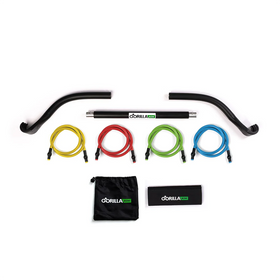
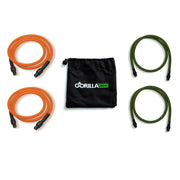
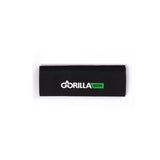
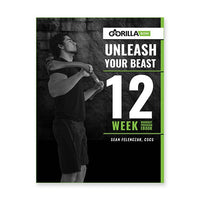
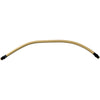



Leave a comment